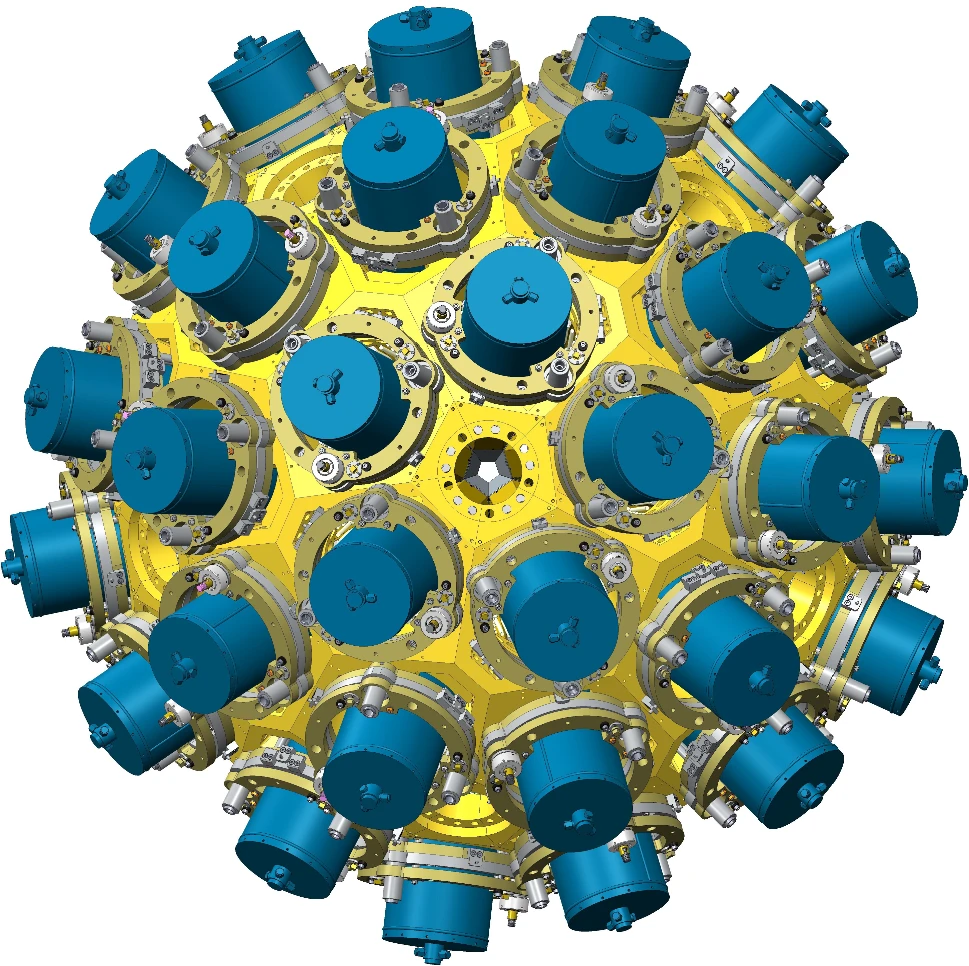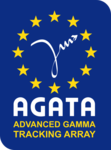AGATA (Advanced Gamma Tracking Array) is a European research project with the aim of developing and building a 4pi gamma-ray spectrometer of the next generation. It will be used in experiments utilising both intense stable and radioactive ion beams, to study the structure of atomic nuclei as a function of angular momentum, isospin, and temperature at the limits of their stability.
AGATA is based on the principle of gamma-ray tracking, which is made possible by the advent of segmented high-purity germanium crystals, advanced digital electronics, and pulse-shape analysis. By using these technologies, the precise energy and 3D position of each of the interaction points of the Compton scattered gamma rays will be determined. Sophisticated gamma-ray tracking algorithms will be used to reconstruct the full energy and the first interaction point of the gamma rays that hit the spectrometer. The full AGATA spectrometer will consist of an array of 180 large (9.0 cm length, 8.0 cm circular diameter) encapsulated high-purity germanium (HPGe) crystals. The crystals are tapered with a hexaconical shape (hexagonal in the front, circular in the rear) and they are segmented electrically into 36 segments (6 longitudinal, 6 transversal).

Artist’s view of the 4π AGATA spectrometer showing the mechanical holding frame (yellow) and cryostat dewars (blue) of the HPGe detectors. The figure is from the AGATA Science White Book.
The AGATA collaboration consists of several hundred scientists, engineers, and students from about 40 research institutes in 13 European countries: Bulgaria, Germany, Italy, Finland, France, Hungary, Poland, Romania, Slovenia, Spain, Sweden, Turkey, and UK. AGATA is an open collaboration and welcomes new members. For contact information, please click on this link.
The AGATA NIM paper, which describes all components of AGATA as implemented in 2011, is available at this link.
Information about the AGATA Science White book, which describes the science case with the AGATA spectrometer for the 2020's, is available at this link.
